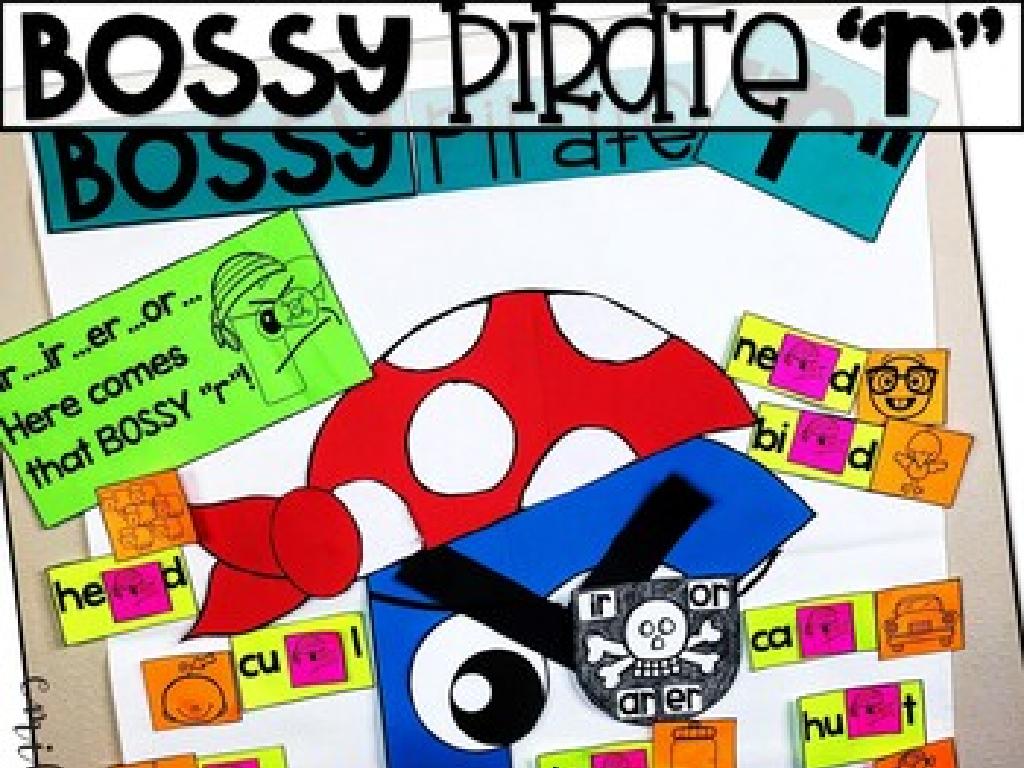Choose The Letter That You Hear: Lowercase
Subject: Language arts
Grade: Kindergarten
Topic: Letter Identification
Please LOG IN to download the presentation. Access is available to registered users only.
View More Content
Letter Identification: Be a Letter Detective!
– Today’s game: Listen and Match
– Become a letter detective
– Detectives find clues. Your clue is the sound you hear!
– Find the right lowercase letter
– When you hear ‘a’, which letter do you see? a, b, or c?
– Get ready for fun learning!
|
This slide introduces a playful activity designed to help Kindergarten students recognize and match lowercase letters to spoken sounds. The game format encourages active participation and listening skills. As the teacher, you will make a sound corresponding to a lowercase letter and ask the students to identify the letter by its sound. Provide examples and guide them through the process, ensuring they understand the objective. Offer praise and gentle corrections to foster a positive learning environment. Prepare a variety of letter sounds and visual aids to accommodate different learning styles. The goal is to make learning interactive and enjoyable, reinforcing their ability to connect sounds to letters.
Exploring Lowercase Letters
– What are lowercase letters?
– They are the small forms of letters
– When do we use lowercase?
– Used mostly in writing sentences
– Spot the difference
– Compare ‘A’ with ‘a’
– Practice with examples
– We’ll practice finding lowercase letters
|
This slide introduces the concept of lowercase letters to Kindergarten students. Begin by explaining that lowercase letters are the smaller versions of the alphabet that we use most of the time, especially within sentences. Show them examples of both uppercase and lowercase letters and ask them to identify the differences. Use visual aids like flashcards or a whiteboard to illustrate this point. Encourage the students to practice recognizing and writing lowercase letters through various activities such as matching games, tracing letters, and identifying them in books or classroom materials. The goal is to familiarize students with the concept of lowercase letters and their usage in everyday writing.
Listen and Find: Lowercase Letters
– Listen to the letter sound
– Match sound to lowercase letter
– Example: ‘a’ as in ‘apple’
– When you hear ‘a’, look for ‘a’, not ‘A’
– Focus on lowercase letters
– We’re not using uppercase like ‘A’, ‘B’, ‘C’
|
This activity is designed to help students associate sounds with their corresponding lowercase letters. Start by clearly pronouncing the sound of a letter and ask the students to find the matching lowercase letter on their alphabet chart or worksheet. Use common words they are familiar with to give examples, such as ‘a’ for ‘apple’. Remind them that they should only look for lowercase letters, not uppercase. This will help reinforce their understanding of the difference between uppercase and lowercase letters. For the activity, you can have different sounds for different students or repeat the same sound for practice. Encourage students to say the letter sound and the example word aloud after finding the letter.
Practice Round: Matching Sounds to Letters
– Listen to the sound ‘mmm’
– It’s the sound in ‘mouse’
– Find the lowercase letter for ‘mmm’
– Look for the letter that starts the word ‘mouse’
– The letter is ‘m’
– ‘m’ is the correct letter for the sound ‘mmm’
|
This slide is designed for a practice round to help students identify the lowercase letter ‘m’ by associating it with the sound ‘mmm’ as in ‘mouse’. Play the sound ‘mmm’ and have the students listen carefully. Ask them to find the lowercase letter that matches the sound. Once they identify the letter, confirm that ‘m’ is the correct letter and praise their effort. This activity reinforces phonemic awareness and the connection between sounds and letters. Encourage the students to practice with other words that start with the letter ‘m’ and to listen for the ‘mmm’ sound in different words throughout their day.
Your Turn: Match Sound to Letter!
– Listen to the sound I make
– Find the lowercase letter
– ‘sss’ as in ‘sun’
– The sound ‘sss’ starts the word ‘sun’
– Which letter for ‘sss’?
– Is it ‘s’, ‘c’, or ‘z’?
|
This slide is an interactive activity for the students to connect sounds to their corresponding lowercase letters. Start by making the ‘sss’ sound clearly and ask the students to listen carefully. Then, prompt them to search for the lowercase letter that matches the sound. Use the word ‘sun’ as a hint to guide them towards the correct letter ‘s’. Encourage the children to say the sound and the letter out loud to reinforce their learning. For students who may struggle, provide additional examples or guide them with questions like ‘What letter do we use when we say ‘sss’ like in ‘snake’ or ‘sand’?’ This activity helps in developing phonemic awareness and letter-sound correspondence, which are foundational skills in reading.
Let’s Play: Find the Letter!
– Listen to the letter sound
– Move to the matching letter
– Find the lowercase letter that matches the sound
– Stay if you’re correct
– Try again if you’re not
– It’s okay to make mistakes, just have another go!
|
This interactive game is designed to help Kindergarten students recognize and identify lowercase letters by their sounds. Play a sound and have the students move to the corresponding letter on a game board laid out on the floor. If a student selects the correct letter, they remain on that spot; if not, they get another chance. This activity reinforces phonemic awareness and letter-sound correspondence, which are crucial skills in early reading development. Make sure to encourage the students and provide positive feedback to keep the activity fun and engaging. Have a variety of letter sounds ready to play and consider using a visual aid to show the letter as well for students who may need extra support.
Class Activity: Letter Hunt
– Listen to the letter sound
– Search for the matching lowercase letter
– Look around the room for the letter that sounds like the one played
– Team up with classmates
– Cooperation makes the hunt fun and efficient
– Find all the hidden letters
– A complete alphabet hunt to reinforce letter recognition
|
This interactive activity is designed to help Kindergarten students recognize and identify lowercase letters through auditory cues and a physical search. Play a sound corresponding to a lowercase letter and have the students search the room to find that letter. Encourage them to work in small groups to foster teamwork and ensure that all students are engaged. As they find the letters, have them say the letter out loud to reinforce their learning. Prepare the room before the class by hiding letters in accessible but challenging places. Consider having multiple instances of each letter to ensure every child has the opportunity to find one. After the activity, review all the letters found and praise the students for their teamwork and discovery.
Review: Lowercase Letters and Sounds
– Lowercase letters are small
– Each sound matches a letter
– The sound /a/ matches ‘a’
– Find letters by their sounds
– Hear /t/? That’s the letter ‘t’
– Practice makes perfect
– Let’s practice with fun games
|
This slide is a recap of what we’ve learned about lowercase letters and their corresponding sounds. Emphasize that lowercase letters are the smaller versions of the alphabet and each one has a unique sound. Encourage students to listen carefully to sounds and match them to the correct letter, reinforcing their phonemic awareness. Provide examples by saying a sound and showing the matching letter. Plan interactive activities where students can practice identifying letters by sound, such as a matching game or a letter hunt. The goal is to solidify their understanding through repetition and enjoyable exercises.
Goodbye and Great Work!
– Amazing job finding letters!
– Practice letter sounds at home
– Try saying each letter’s sound and writing it down
– See you for more letter fun!
|
This slide is meant to congratulate the students on their hard work during the lesson and to encourage them to continue practicing at home. Remind them that practicing the sounds of each letter will help them get better at identifying them. Provide some simple homework like asking the parents to help them find objects that start with different letters of the alphabet. Let them know that you look forward to seeing them in the next class and that you’re excited to continue the learning journey with them. Make sure to keep the atmosphere positive and encouraging to inspire the children to look forward to the next lesson.




